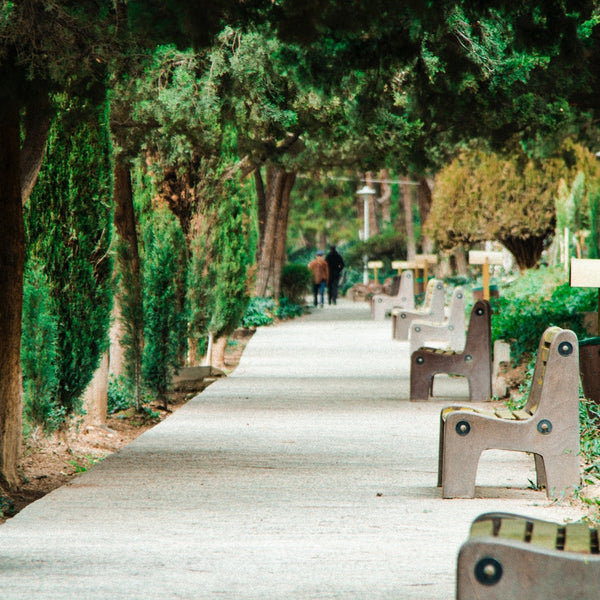For the Keys to a Long Life, Look to the Blue Zones

From serums, red lights, and facial fillers that target wrinkles to nootropics aimed at boosting brain function and billionaire-backed biotech startups looking to crack the code on the human lifespan, we’ll try anything to reverse the physical and mental effects of aging. We’re a society obsessed. So much so that the global anti-aging market’s estimated worth was approximately $58.5 billion dollars in 2020, and is expected to grow by seven percent by 2026.
It makes sense. Getting older can be challenging. As we age, our cognitive function declines, we’re not as spry as we once were, we’re more prone to injury, and we’re at higher risk for health issues like cancer, heart disease, dementia, and diabetes. And for many of us, we’ve seen these effects first-hand as parents and loved ones increase in age.
While modern medicine and better access to healthy foods have improved our overall life expectancy — global life expectancy is projected to be the highest ever in 2022 at 72.98 years — there are five distinct geographic areas in the world that appear to have unlocked the fountain of youth, no serums, supplements, or biohacking required.
These unique places are known as the blue zones, and they’re located in Okinawa, Japan; Sardinia, Italy; Nicoya, Costa Rica; Ikaria, Greece; and Loma Linda, California. It’s in these islands and cities where people consistently live the longest.
What Makes Them Special?

Each blue zone is home to communities with higher than most life expectancies, but they have unique characteristics, too.
- In Okinawa, natives experience less cancer, heart disease, and dementia than those living in the United States. The island is also home to a population of women who live longer than any others on the planet.
- Sardinia, Italy, was the first identified blue zone. In the mountainous highlands of its Barbagia region lives the world’s largest concentration of male centenarians, or individuals more than 100 years old.
- Meanwhile, communities living in Nicoya, Costa Rica experience the world’s lowest middle-age rates of morality and are home to the second-highest concentration of male centenarians.
- On the tiny Aegean island of Ikaria, Greece, chronic illness like dementia is virtually non-existent and people in this region boast some of the lowest rates of middle-age mortality.
- And in Loma Linda, California, you’ll find the largest population of Seventh-day Adventists, a community that lives on average 10 years longer than their fellow Americans.
So what’s their secret? The answer is eight specific lifestyle habits they all share. Here’s how to live life like they do in the blue zones.
1. Move Naturally

Exercise is an important part of a healthy body and mind. But you don’t have to lift weights or go on a run to get in a good workout. People that live in the blue zones get their heart rates up simply by embracing natural movement through gardening, doing yard work, and walking to their destinations rather than getting in a car. At the same time, they’re soaking up essential vitamin D.
2. Find Your Purpose
Social connections and supportive relationships have been shown to increase happiness and help us live longer. And in every blue zone you visit, you’ll encounter close-knit communities where people value spending time with their friends, family, and neighbors — often on a daily basis. This interconnection gives us a sense of purpose and a reason to wake up each day.
3. Minimize Stress

Stress is a major indicator of your risk of chronic illness. In the blue zones, they don’t experience much of it. Instead, they live life at a relaxed pace, taking moments to enjoy cultural traditions and appreciate the day. For example, Adventists pray, Ikirians take a mid-afternoon nap, and Okinawans honor their ancestors.
4. Follow the 80 Percent Rule
Unlike the majority of the West, people who live in the blue zones eat their smallest meals of the day in the late afternoon or early evening. They also tend not to indulge in after-dinner treats or late-night snacks. Blue zone communities also don’t eat until they can’t eat anymore — their portion sizes tend to be smaller, too. Instead, they stop eating once they are 80 percent full to keep them from overindulging.
5. Eat Mostly Plants
Meat is an afterthought in the blue zones. They limit their intake of meat to about five times per month, preferring to fill up on whole grains, nutrient-rich legumes, and an array of colorful, typically self-grown fruits and vegetables. The Mediterranean and Mesoamerican diets are also popular.
6. Enjoy Red Wine

Due to religious restrictions, Seventh-day Adventists don’t drink wine. But the rest of the blue zones enjoy about one to two glasses of red wine per day — almost exclusively when spending time with friends and family. It’s not about catching a buzz, the point is to experience laughter and togetherness alongside a glass of full-bodied wine to end the day.
7. Find Belonging
Studies show that people who regularly attend religious services live, on average, four years longer than those who don’t. It makes sense then that the majority of people living in the blue zones are part of a faith-based community. The denomination doesn’t matter, but the support and connection do.
8. Prioritize Family

Among the blue zones are different cultures and traditions, but they all focus on strong family ties. It’s important to them to put loved ones first and take care of them when they're in need. It’s not uncommon for families to have multiple generations living together under one roof or nearby — they’re always close enough to lend an ear, laugh, and help one another. Close relationships are shown to decrease cognitive decline as we age and reduce mortality rate.





